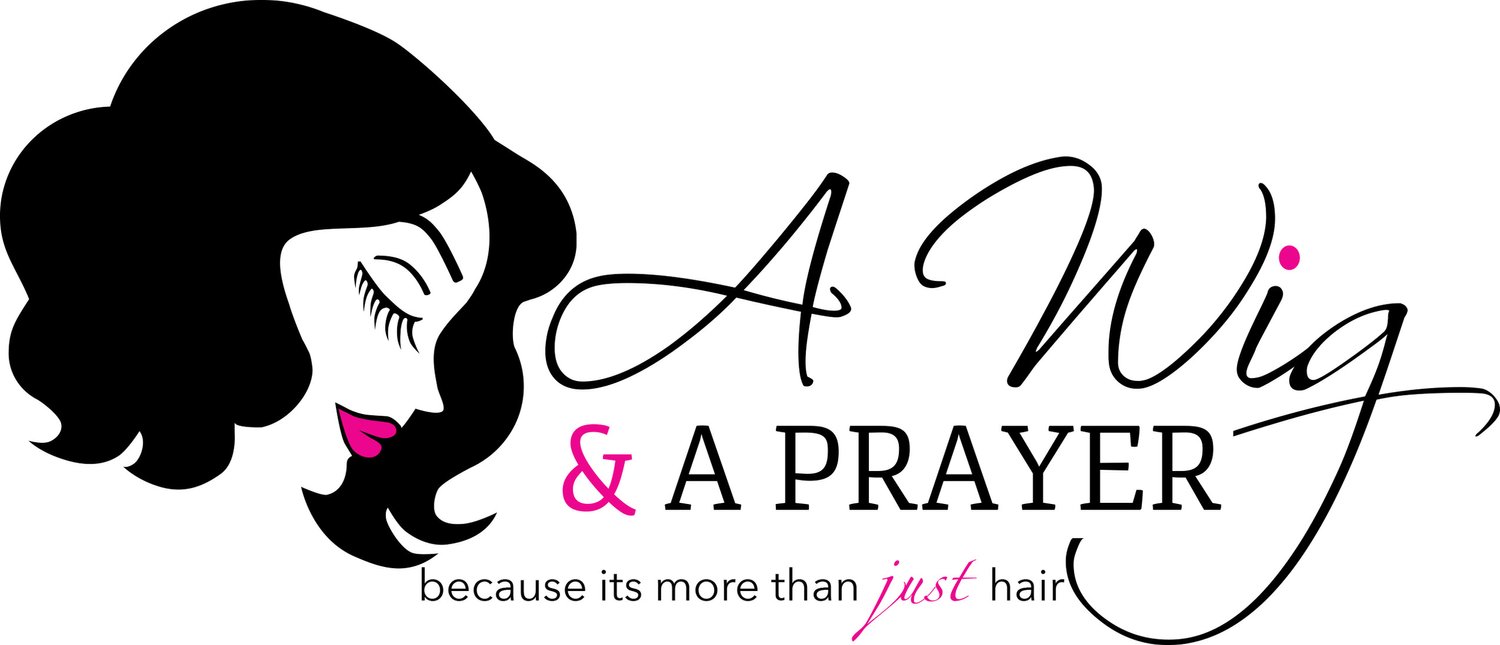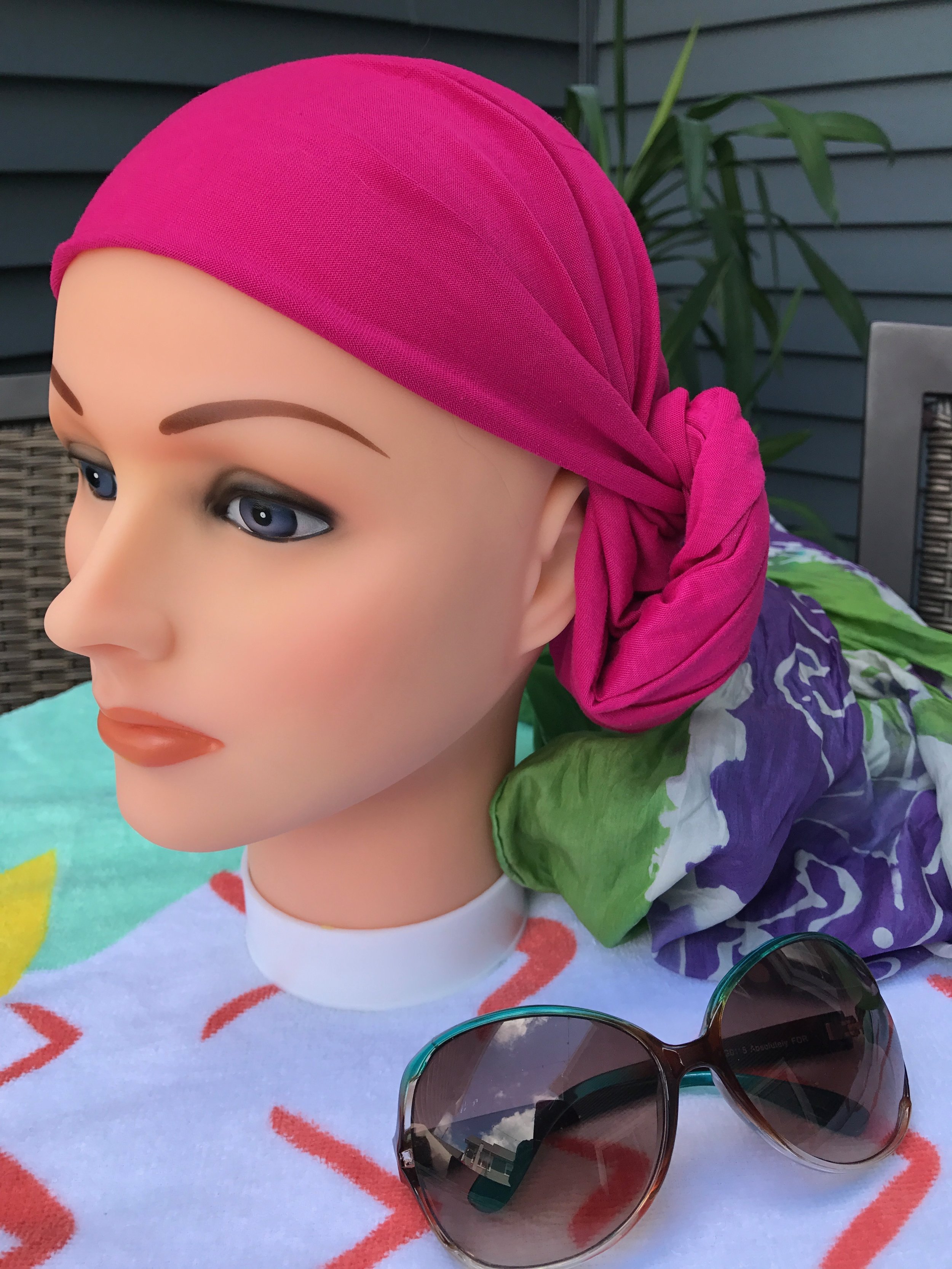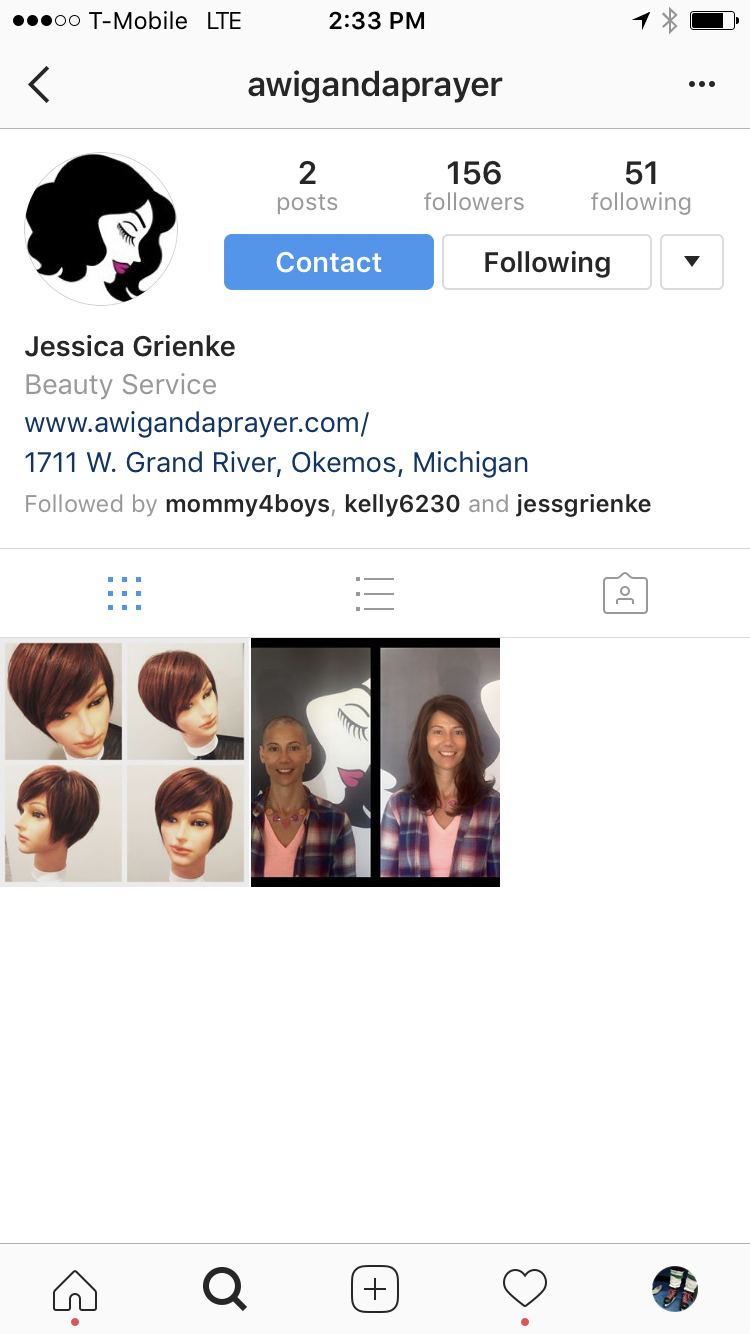When you look in the mirror and realize your hair is falling out – either thinning due to androgenic alopecia, or spots falling out due to alopecia areata, or knowing that your chemo treatment for cancer is finally causing your hair to fall, your first thought may be panic.
You have options. Your physician, if you’re receiving care for an autoimmune disease like alopecia, or for cancer treatment, may help you with understanding your disease, but probably is not able to help you through the emotional and practical side of hair loss.
That’s where your local wig salon for hair loss is really going to be your go-to for help. Besides a trusted confidante in a private one-on-one setting, your stylist at a wig salon (not a wig store or traditional salon where the public view of your hair loss may freak you out) will walk you through your best options to work with the hair you have, and prepare you for the hair you GET to have.
In Okemos, Jessica, at A Wig and a Prayer works with clients on an ongoing basis to manage their hair loss with consultations on wigs, toppettes, extensions and cuts to your biological hair to maximize the hair you have.
The first step is making the call to the salon.
It’s best not to wait, as time passes, more hair will fall out. Planning ahead is important, and we’ve authored an article on when should you start wearing a wig for hair loss as a guide. But you have many options before you consider a full wig.
Emotionally, though, you may be a wreck – if you’ve lost your hair before, you know what you’re in for, and if you’ve never lost your hair, you have no idea what you’re up against! Talking to a trusted friend in your wig stylist is invaluable to gain that perspective. We recommend thinking about two things:
1) What is the worst case scenario? You’ll lose all your hair. What steps can you take to help yourself through this time. Maybe it’s looking at ‘dream hair’ options – wearing the hair you’ve always wanted but never had.
2) What is your best-case scenario? Will your hair grow back after cessation of treatment (cancer) or the onset of treatment (autoimmune?) Can your thinning hair be augmented by a toppette that is woven into and secured into the hair you have?
Take some time to step away and do something healthy for yourself – attend a yoga class, go for a hike in the woods, journal or take yourself out for a fancy coffee. Perspective helps to make that mountain more of a small hill. You may still have to climb it, but you can be more prepared to do so.
Looking at both of these sides, from an objective place, can help put the panic of hair loss into perspective. Talking with friends or your spouse about the emotional side of hair loss can also be helpful. Talking with a hair loss wig stylist who specializes in helping women with hair loss is critical.

















